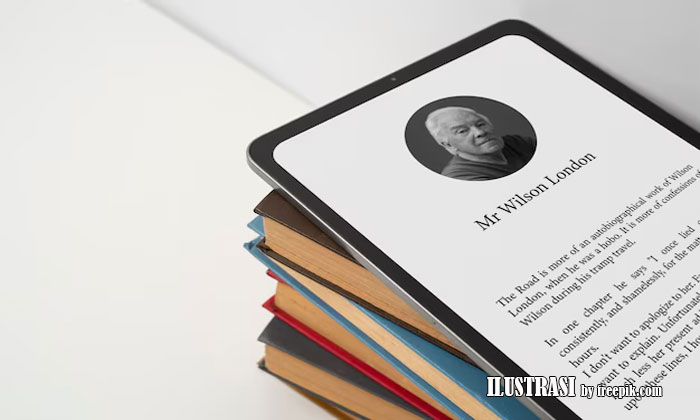
Web design is a dynamic and ever-growing field, with a growing demand for skilled designers who can create visually stunning, functional and user-friendly websites. But what exactly does it take to be a successful web designer? It’s not just about knowing how to use design tools or having a good eye for aesthetics, there are some essential Web Designer Skills and Tools to master.
Key Skills a Web Designer
If you want to improve your web design skills, let’s discuss the key skills you’ll need.
1. Proficiency in HTML and CSS
At the core of web design is HTML (HyperText Markup Language) and CSS (Cascading Style Sheets). HTML is used to structure the content on a website, while CSS controls the design and layout. Mastering these two is a must for every web designer.
- HTML helps you create elements such as headings, paragraphs, images, links, and forms. Understanding the semantic elements of HTML is crucial for creating clean, accessible, and well-structured content.
- CSS allows you to style these elements, including things like colors, fonts, spacing, and positioning. Knowing how to use CSS efficiently, including concepts like flexbox and CSS grid, helps you create responsive, well-organized layouts that adapt to different screen sizes.
Understanding how HTML and CSS work together allows you to transform ideas into actual web pages and ensures your designs are both functional and aesthetically pleasing.
2. Responsive Web Design
With more people accessing websites on mobile devices than ever before, understanding the principles of responsive web design is essential. Responsive design means creating websites that automatically adjust and provide an optimal viewing experience, regardless of the device or screen size.
Key techniques in responsive web design include:
- Fluid layouts that resize based on the screen size.
- Media queries to apply different styles based on device characteristics like screen width or orientation.
- Flexible images that scale appropriately for various screen sizes.
Being able to design websites that work on desktops, tablets, and smartphones is a must-have skill for any web designer.
3. UX/UI Design Principles
User experience (UX) and user interface (UI) design are essential components of web design. UX focuses on creating websites that are easy to use and intuitive, while UI focuses on the layout and interactive elements that make a website visually engaging.
- UX design involves understanding user needs and behaviors, creating wireframes, and organizing the layout and content in a way that makes sense for users. It’s about ensuring that visitors to the site have a smooth, efficient, and pleasant experience.
- UI design involves using design principles, like color theory, typography, and consistency, to make the interface attractive and user-friendly. Knowing how to design buttons, forms, and navigation bars that are visually appealing and easy to interact with is key to a successful UI.
A solid understanding of both UX and UI design helps web designers build websites that not only look good but also function seamlessly.
4. Design Software Proficiency
While coding is an essential part of web design, understanding how to use design software is equally important. Tools like Adobe Photoshop, Illustrator, Sketch, and Figma are essential for creating mockups, prototypes, and visual elements for a website.
- Photoshop and Illustrator are widely used for creating graphics, icons, and image editing, which are crucial for web designs.
- Sketch and Figma are popular for creating wireframes, interactive prototypes, and high-fidelity designs. These tools also allow for collaboration among team members, making them a go-to for many modern web designers.
Knowing how to use these design tools allows web designers to create professional, polished visual assets before jumping into development.
5. JavaScript and jQuery Knowledge
While web designers traditionally focus on layout and visuals, having a basic understanding of JavaScript and jQuery can be a game-changer. These programming languages help add interactivity and dynamic features to websites, such as image sliders, pop-up forms, or interactive maps.
- JavaScript is the backbone for creating dynamic web pages, while jQuery is a library built on JavaScript that simplifies common tasks like animations and DOM manipulation.
- A web designer with a basic understanding of JavaScript can work more effectively with developers and contribute to adding functionality to websites.
While advanced JavaScript may be more suited for developers, having a grasp of the basics is valuable for designers who want to bring their websites to life.
6. Attention to Detail
Web design isn’t just about making things look nice—it’s about making sure everything is polished and functional. A keen eye for detail is a skill that separates good web designers from great ones. Whether it’s ensuring consistent spacing, aligning text perfectly, or choosing the right typography, attention to detail ensures that the final product looks professional and refined.
Designing websites that are not only beautiful but also functional requires meticulous attention to small details—like making sure buttons are clickable, forms are properly aligned, and images load correctly on all devices.
7. SEO (Search Engine Optimization) Basics
Search engine optimization (SEO) is important for helping websites rank higher in search engine results. Web designers should have a basic understanding of SEO principles so that their designs support good SEO practices.
- This includes creating SEO-friendly URLs, using proper heading structures (H1, H2, etc.), optimizing images with alt text, and ensuring that the website loads quickly (since page speed is an SEO factor).
- Knowing how to design a website that’s easy to crawl by search engines can significantly improve the visibility of the site in search results.
Although SEO is primarily handled by digital marketers and developers, understanding how design choices impact SEO can help web designers create more successful websites.
8. Collaboration and Communication Skills
Web design is rarely a solo job. Web designers must work closely with other professionals, including developers, content creators, and clients. Strong communication and collaboration skills are essential for ensuring that everyone is on the same page and that the project progresses smoothly.
Being able to explain design decisions to clients and colleagues, take feedback constructively, and work as part of a team is vital for a successful web designer. These skills help maintain good relationships with clients and ensure the final product meets their needs.
9. Understanding Web Development (Basic Level)
Even if you’re not a developer, having a basic understanding of web development can help web designers work more effectively with developers. Knowing the basics of how websites are built, including the relationship between HTML, CSS, JavaScript, and backend technologies, can make it easier to communicate design requirements and troubleshoot any issues that arise during the development process.
You don’t need to become a full-fledged developer, but understanding how design and development interact can make you a more versatile designer.
10. Adaptability and Continuous Learning
The world of web design is constantly changing, with new trends, tools, and technologies emerging all the time. To stay competitive and relevant, web designers must be adaptable and willing to learn. Whether it’s keeping up with the latest design trends, learning a new design tool, or experimenting with new design techniques, the ability to keep growing is essential.
Staying up to date with industry trends and continually honing your skills ensures that your designs remain fresh and innovative.
Conclusion
Being a web designer requires a wide range of skills, from proficiency in HTML and CSS to a solid understanding of UX/UI principles and design tools. Web designers need to be well-rounded, with the ability to think critically, collaborate effectively, and continuously adapt to new trends and technologies. By mastering these key skills, web designers can create beautiful, functional, and user-friendly websites that stand out in today’s competitive digital world.






